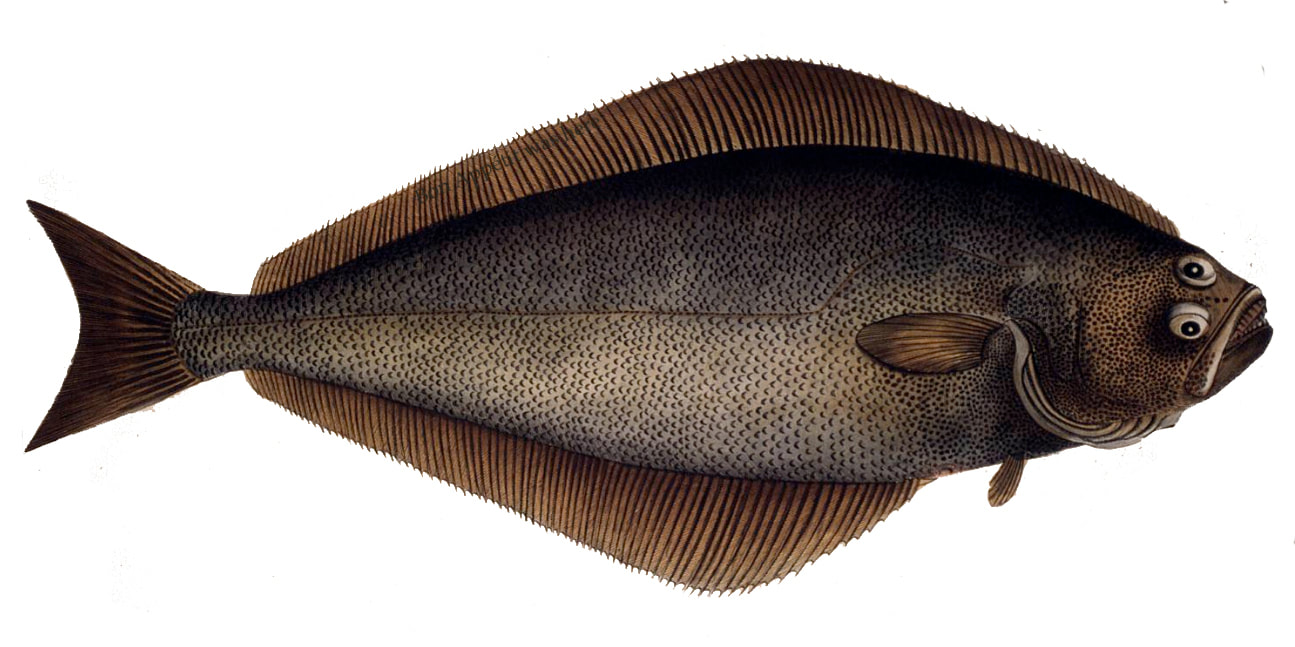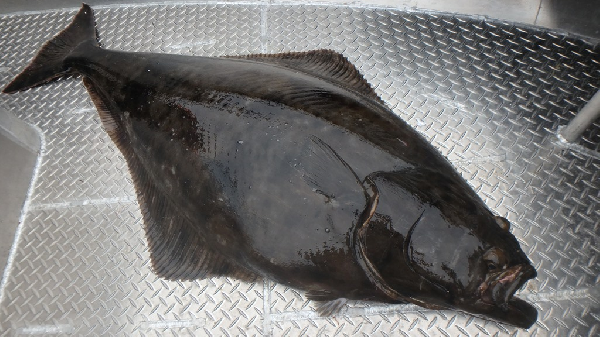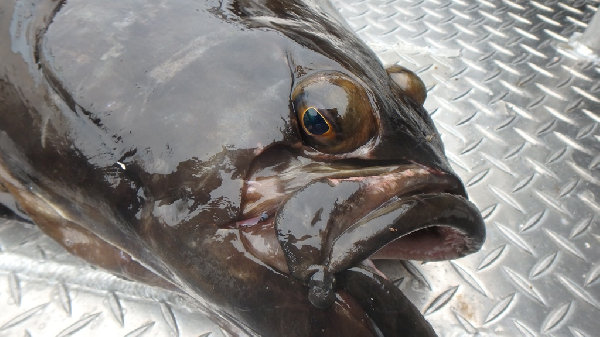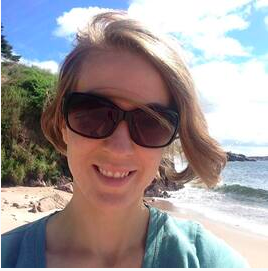|
By Kayla Hamelin There are a lot of interesting creatures living out there in the ocean. Some of them, like jellyfish, we can see floating in the water. Others, like periwinkle snails, we can find clinging on our rocky shores. Today, I will introduce you to an amazing group of creatures that you might not have seen before – they’re called flatfishes! (Pro Tip: How do you make the word “fish” plural? If you’re talking about individuals from the same species, you can just say FISH! If you’re talking about individuals from different species, you should say FISHES!) Hippoglossus hippoglossus, also known as Atlantic Halibut! The flatfish group includes a whole bunch of different species such as flounder, plaice, and halibut. They have one thing in common – they have a unique flattened shape! Some fishes that have a flat shape, like skates and rays, are “dorsoventrally flattened”, which means that they look squished flat on their bellies. The flatfishes that I am writing about today are different because they are “laterally” flattened, which means that they are flattened side to side. Flatfishes are typically predators and their favourite foods include crustaceans, molluscs, polychaete worms, and smaller fishes. These flat friends are mostly bottom-dwelling and they usually prefer a soft substrate (that means a squishy bottom like mud or sand). Because of their shape, when they are resting near the bottom, they aren’t resting on their belly like a skate or ray – they are lying on their side! Hippoglossu hippoglossus (photo by Charles Hendron) Flatfish always look on the bright side… because both of their eyes are on the side of their head facing up into the water, rather than down towards the ground! This makes their face look a little bit funny. However, they aren’t born with this shape. When they’re young, they start swimming around like a regular fish and then they eventually start swimming tipped over on one side. As a result of swimming on their side, the eye on the underside of their body migrates around to their upper side! As a fully developed fish, they swim on their side with both of their eyes looking upwards, while their underside is “blind”. Some species become “right-eyed” and some are “left-eyed”, depending on which side of their body faces up. Smile! (Hippoglossus hippoglossus, photo by Charles Hendron) My favourite flatfish is the mighty Atlantic halibut. Here are my top 3 Atlantic halibut facts: 1)Atlantic halibut have a really fun scientific name: Hippoglossus hippoglossus. Try saying that 5 times fast! Hippoglossus is Latin for “horse tongue”, which apparently refers to the shape of the fish. 2)Atlantic halibut is the largest groundfish in Atlantic Canada! They can be more than 2.5 m long and can tip the scales at more than 300 kg. That’s a big fish! 3)Atlantic halibut are really deep… literally! They are most abundant at depths of 200– 500 m in deepwater channels between offshore banks and along the continental shelf. While you might not be able to go out into the deep sea to find an Atlantic halibut, the fishermen in our area certainly know about them! They are one of the most commercially-valuable fish harvested in Atlantic Canada. You might be able to spot one of their smaller cousins, like a flounder, right here in Halifax harbour. Keep your eyes peeled for these fishy friends hanging out near the seabed next time you’re out for an ocean adventure!
0 Comments
Leave a Reply. |
Categories
All
We send blog recaps with in all our quarterly newsletters!
|



